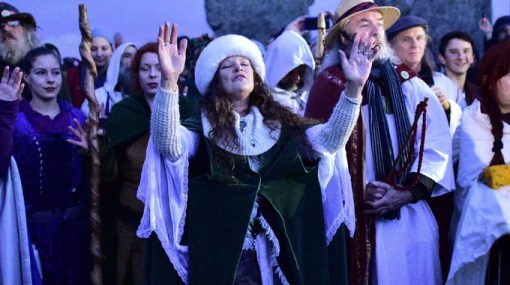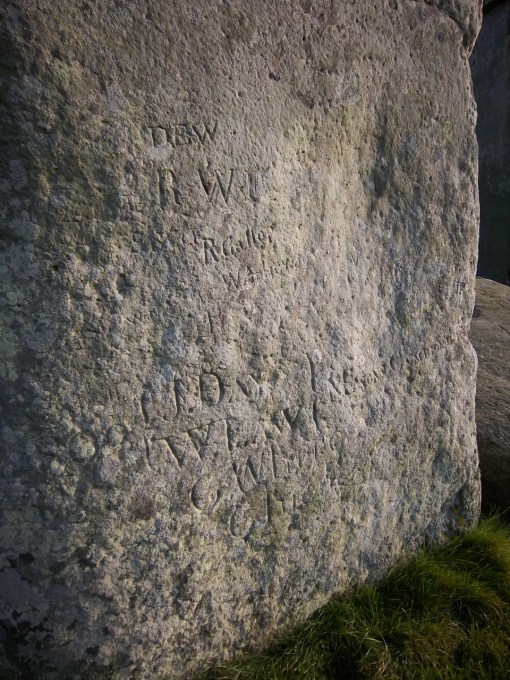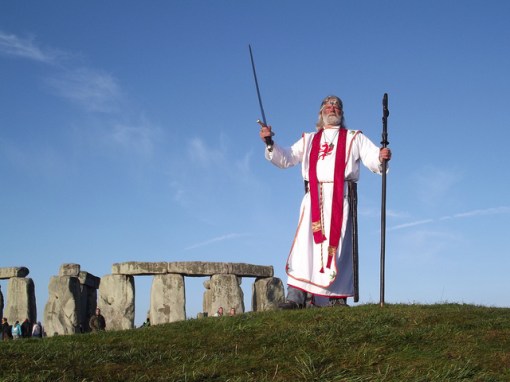The days are getting shorter, the nights are drawing in, and the Winter Solstice is just a a week away. It may feel like the days can’t get any shorter, but we still haven’t yet reached the winter solstice , which is the shortest day of the year.

The solstice marks the moment the sun shines at its most southern point, directly over the Tropic of Capricorn.
The world might look pretty grim now, but remember: as soon as the solstice has passed, the days will start getting longer again and you can start looking forward to Spring.
Here’s your guide to the darkest day of the year – and a few reasons to be cheerful about it.
What is the winter solstice?
The winter solstice marks the shortest day of the year and the official beginning of winter.
The solstice itself is the moment the sun is shining farthest to the south, directly over the Tropic of Capricorn.
When is the Winter Solstice?
The date of the winter solstice is different every year, falling between December 20th and 23rd.
This year, the solstice will occur on Wednesday, December 21. The sun will rise in the UK at 08:04 GMT and set at 15:54 GMT, giving just 7 hours and 49 minutes of daylight.
Traditions and rituals
The winter solstice is a major pagan festival, with rituals of rebirth having been celebrated for thousands of years.

Chief Druid leads the Winter Solstice service at Stonehenge (Photo: PA)
Every year revellers gather at Stonehenge to watch the sunrise on the shortest day.
Many of the traditions we now think of as being part of Christmas – including Yule logs, mistletoe and Christmas trees – have their roots in the pagan celebrations of winter solstice.
Wait, the Christmas tree was originally a winter solstice tree?
Sort of. The Druids – the priests of the ancient Celts – used evergreen trees , holly and mistletoe as symbols of everlasting life during winter solstice rituals.
Cutting them down and putting them in their homes would have been too destructive to nature.
But when Saint Boniface, also known as Winfrith of Crediton, found a group of pagans worshipping an oak tree in 8th Century Germany, he cut the tree down.
Myth has it the converted pagans in the region returned the following year to decorate the fir tree.
Will the days start getting longer again?
Yes. After the solstice, the days will gradually get longer until the summer solstice on Wednesday, 21 June 2017.
Article by By Sophie Curtis (Source The Mirror)
Experience sunrise at Stonehenge on the Winter Solstice with our exclusive guided tour from London or Bath.
Stonehenge Guided Tours
The Stonehenge Experts
http://www.StonehengeTours.com
It is the day with the least sunlight with the winter solstice having been celebrated for thousands of years.

A druid ceremony is held during the Winter Solstice at Stonehenge
THE winter solstice: the shortest day and longest night of the year.
So what is so important about this date? What about it possesses people to dress in unicorn masks and visit Stonehenge?
Here, we take a look at just what the winter solstice is – and why a day with so little sunlight is worth celebrating.
What is the Winter Solstice?
The winter solstice is a phenomenon that marks the shortest day of the year.
Often referred to as the official beginning of winter, the solstice generally only occurs for a moment.
The true solstice occurs when the Earth is tilted the furthest away from the Sun on its axis.
Despite it only lasting a moment, the full day is recognised.
When is the Winter Solstice?
The winter solstice generally falls between December 20 and 23.

Stonehenge Winter Solstice Tour
In 2016, it will fall on Wednesday, December 21.
This means, for the UK, the sun will rise at 8.04am and set at 3.54pm – meaning we will have just 7 hours and 49 minutes of daylight.
A winter solstice also occurs in the Southern Hemisphere, with the day occurring in late June.
How is it celebrated?
The day is one that is celebrated by pagans and druids, with rituals of rebirth performed throughout history on the day.
One of the biggest celebrations in the UK occurs at Stonehenge with crowds gathering to watch the sunrise on the morning of the winter solstice.
The crowds of devotees, often dressed for the occasion, regularly gather at the historic site.
It is just one of the many pagan festivals, which include midwinter, midsummer and inbolc – the day that traditionally marks the start of spring.
The importance placed on the day comes from how people were previously so ecoenomically dependent on the seasons with straveation common in the first months of winter.
Will the days start to get longer?
After the solstice, the days will start to get longer.
The process is gradual, with minutes added everyday.
The days will eventually lengthen until the summer solstice, which is expected on Wednesday June 21.
Article source: By BRITTANY VONOW The Sun Online
Join us on a guided tour from London or Bath and join the Pagan celebrations at sunrise on the Winter Solstice:
Stonehenge Winter Solstice Tour
The Stonehenge Experts
Stonehenge Guided Tours
http://www.StonehengeTours.com
Stonehenge Stone Circle News and Information
 Stonehenge was built over 5,000 thousands years ago and remains a place of spiritual significance for many. Credit: PA
Stonehenge was built over 5,000 thousands years ago and remains a place of spiritual significance for many. Credit: PA  The sun peeks through clouds during a winter solstice ceremony at the ancient neolithic monument of Stonehenge near on December, 2015. MATT CARDY VIA GETTY IMAGES
The sun peeks through clouds during a winter solstice ceremony at the ancient neolithic monument of Stonehenge near on December, 2015. MATT CARDY VIA GETTY IMAGES 

 There’s even some graffiti that refers to masons – on the southwest side of the tallest stone still standing these lines appear:
There’s even some graffiti that refers to masons – on the southwest side of the tallest stone still standing these lines appear:





